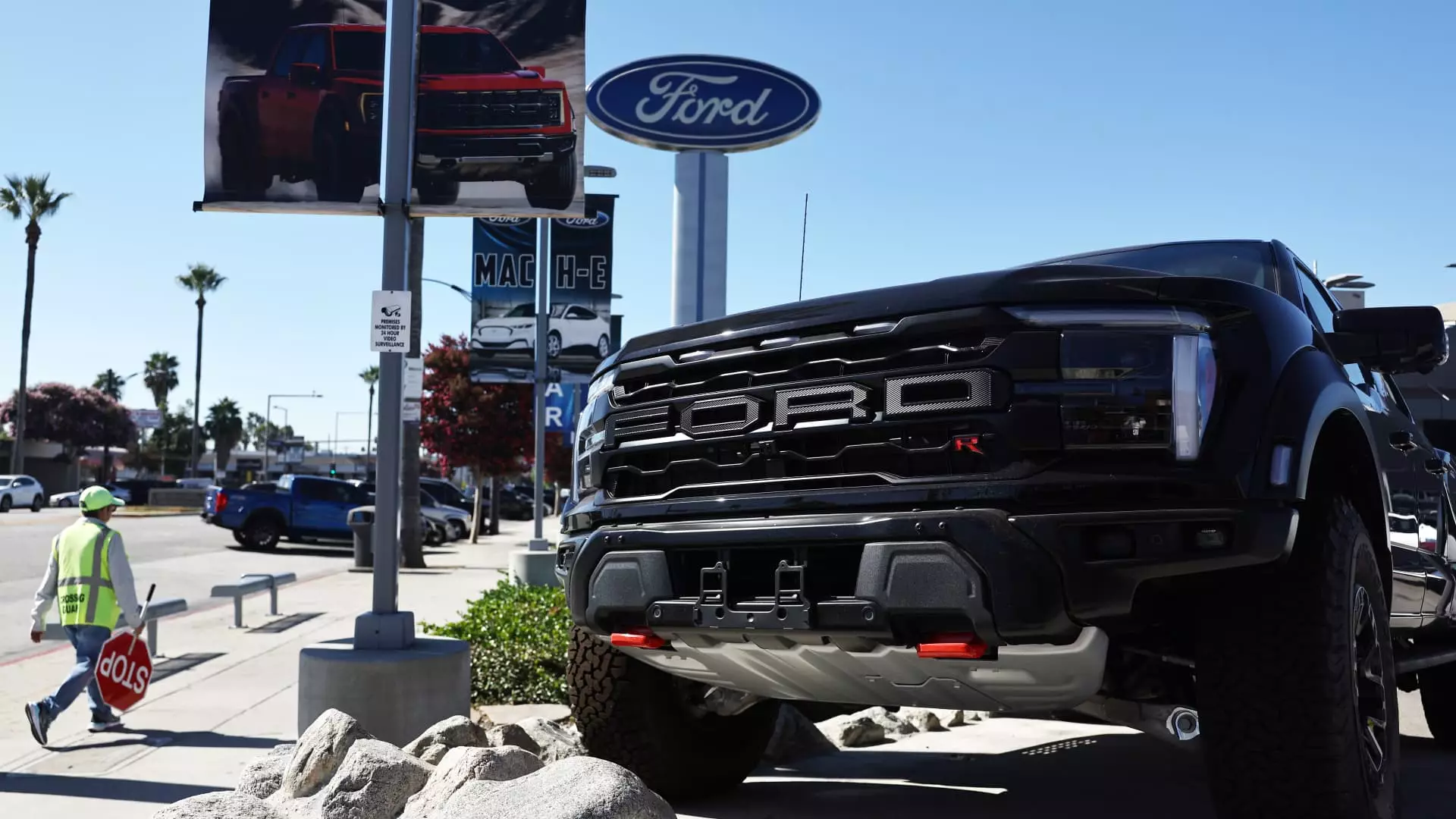The automotive industry is facing a seismic shift as President Donald Trump’s tariffs on imported vehicles loom ominously over American manufacturers. With a tax rate of 25%, this decision not only threatens the profit margins of auto companies but also raises the specter of higher prices for consumers. The chaotic environment forces automakers to innovate quickly, but at what cost? Ford Motor Company is the latest to maneuver through this quagmire, launching an employee pricing initiative dubbed “From America, For America.” If you’ve been watching the news lately, it’s clear that Ford’s approach to mitigate the upheaval is both bold and reckless. Is this the correct strategy or simply a hasty reaction to a crisis?
Ford’s Desperate Gamble
Ford’s “From America, For America” pricing program has stirred a mixture of excitement and skepticism among industry analysts and consumers alike. On one hand, it is a brilliant attempt to stimulate sales amid uncertainty, but it also reveals how dire the situation has become. By pushing vehicles at prices that are often close to invoice, Ford jeopardizes its already strained profit margins and raises fundamental questions about the sustainability of such a tactic in the long run.
While the company touts its support for American operations, one can’t help but wonder: are they merely trying to distract from the larger issues posed by the tariffs? The statement from Ford emphasizes their understanding of American consumers, who are facing economic pressures. But does this initiative signify genuine support for workers, or is it simply a self-serving strategy aimed at maintaining market share? The optics lean toward the latter, raising suspicions about the company’s true intentions.
The Industry’s Climate of Fear
What becomes evident is that Ford’s pricing strategy reflects a broader industry panic driven by consumer apprehensions regarding rising vehicle costs. Analysts have described this tactic as taking “opportunity in the chaos,” yet this approach assumes that the chaos will not lead to a long-term decline in brand loyalty or quality perceptions. Automakers like Stellantis, following suit with similar pricing initiatives, further exacerbate the situation by engaging in a race to the bottom. It might be a temporary fix to increase sales, but it is also an indicator of an industry scrambling for answers in turbulent waters.
With economic instability looming—J.P. Morgan has enhanced recession probabilities to a frightening 60%—the precarious state of the industry calls for more than just flashy promotions. The question lingers: will these tactics genuinely resonate with consumers, or will they only serve as a band-aid on a festering wound? The marketplace cannot thrive on gimmicks alone; a robust, long-term strategy is requisite for survival.
High Stakes and High Inventory
Ford’s rivalry with companies like Stellantis extends beyond market positioning; it’s deeply intertwined with inventory management. Recent reports suggest both companies have been sitting on excess stock, with inventory days exceeding the industry-standard 60-80 day range. Ford’s substantial offering of older models at reduced prices might seem advantageous at first glance, but it also presents a perilous situation. The logic of needing to clear out inventory to make way for newer models becomes less tenable as external pressures mount from tariffs and economic concerns.
This stark reality aligns with an alarming trend among various manufacturers who are wrestling with low consumer demand and the heightened prices stemming from the tariffs. There’s a palpable fear that if the economic landscape continues to decline, those who weren’t proactive in adjusting prices to meet consumer needs will simply flounder. Even as Ford and Stellantis grapple with their respective inventories, consumer skepticism about vehicle affordability looms large—a variable that could severely impact future sales.
Consumer Sentiment: An Uncertain Ally
As the tariffs take effect, they amplify consumer fears—prompting many to rush to dealerships in the final weeks before the tax hit. However, it’s crucial to consider whether these temporary spikes in consumer activity are sustainable. While recent data show sales in March reaching alarming highs, such frenzied consumer behavior might hint at a desperation to act rather than a swell of loyalty to any brand.
Furthermore, the underlying question remains: will price incentives be enough to instill confidence among consumers when the broader economic picture looks progressively bleak? What happens if stricter pricing structures return that obliterate the perceived savings gained through temporary incentives? Companies must recognize that the consumer psyche is complex and cannot be manipulated indefinitely by short-term strategies.
Such a tumultuous moment calls for a delicate balance between maintaining competitiveness and fostering sustainable growth. Rather than merely reacting to external pressures, true leadership in the automotive industry will demand bold, innovative thinking that prioritizes consumer interests while stabilizing economic foundations for the future. The resilience of America’s auto industry hinges on much more than clever promotional gimmicks, and any failure to pivot wisely could spell disaster.


Leave a Reply